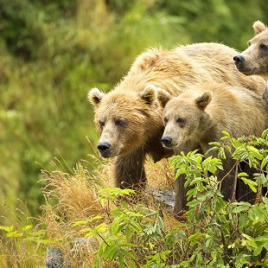Neophobia – the fear of unfamiliar stimuli – is more pronounced among birds and mammals, especially those reared in the wild, than in other animals, a recent meta-analysis reveals. Researchers looked into different kinds of neophobia among predators, both wild-caught and captive, to see which animals brave the novelty better. Their findings also identified that neophobia was lower in animals higher up in the food chain than those in the lower trophic levels – a useful adaptation for the latter animals, which are more likely to end up as someone’s prey. Study authors also identified a gap in literature concerning neophobia when it comes to invertebrates and reptiles, as well as neophobia towards sounds.
Authors:
Adam L. Crane, Maud C. O. Ferrari
Corresponding author:
Adam Crane, Department of Biology, University of Saskatchewan, adam.crane@usask.ca
Original paper published in the Proceedings of Royal Society B: Biological Sciences on August 23, 2017.
